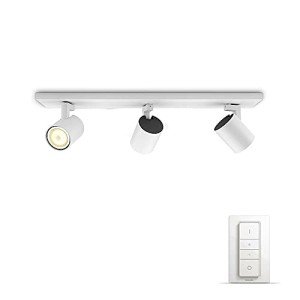Are You In Search Of Inspiration? Try Looking Up Contemporary Lighting UK

Contemporary Lighting in the UK: Transforming Spaces with Illumination
Lighting plays an essential role in defining the atmosphere and functionality of any area. In the UK, contemporary lighting has become a significant design component, providing innovative solutions that mix aesthetic appeals with usefulness. Buy Energy-Efficient Lighting UK into the numerous styles, products, and innovations forming contemporary lighting, along with tips for choosing the most appropriate fixtures for different settings.
The Evolution of Contemporary Lighting
Contemporary lighting in the UK reflects the altering tastes and technological developments in design. It encapsulates a wide range of designs, consisting of:
- Minimalist: Characterized by simpleness and tidy lines, minimalist lighting fixtures concentrate on kind and function without unneeded embellishments.
- Industrial: Inspired by urban settings, industrial lighting integrates basic materials like metals and woods with vibrant designs, producing edgy, practical pieces.
- Scandinavian: Known for its heat and simpleness, Scandinavian lighting frequently features soft colors and natural materials, focusing on creating a relaxing atmosphere.
- Smart Lighting: This modern pattern integrates innovation with design, enabling users to control their lighting with mobile apps, voice commands, or automation systems.
To show the development and range in the field of contemporary lighting, consider the table listed below, which highlights crucial characteristics of various styles.
| Design | Key Characteristics | Popular Materials | Perfect Spaces |
|---|---|---|---|
| Minimalist | Easy, functional designs | Metal, glass, wood | Modern homes, workplaces |
| Industrial | Raw, unfinished appearance | Steel, concrete, wood | Lofts, galleries |
| Scandinavian | Comfortable, warm visual appeals | Natural fibers, light wood | Living rooms, coffee shops |
| Smart | Integrated innovation, automation | Differs commonly | Houses, workplaces, retail spaces |
Picking Contemporary Lighting Fixtures
Selecting the right lighting fixtures for a space needs cautious factor to consider of a number of aspects. Here are key aspects to bear in mind:
1. Purpose of the Space
Before choosing fixtures, consider the designated usage of the location. Various functions need various kinds of lighting:
- Task Lighting: Focused lighting for activities such as reading, cooking, or studying. Examples include table lamps and under-cabinet lights.
- Ambient Lighting: General lighting that supplies overall lighting. Ceiling lights and pendant fixtures fall under this classification.
- Accent Lighting: Designed to highlight particular functions or locations, such as artwork or architectural details. Wall sconces and track lighting prevail options.
2. Design and Theme
The lighting should complement the existing decoration. Choose helpful hints that match or boost the overall theme of the space, whether it's contemporary, rustic, or diverse.
3. Size and Scale
Consider the proportion of the lighting fixtures relative to the area. A large chandelier may look stunning above a spacious dining table, while smaller sized pendant lights work well in compact settings.
4. Energy Efficiency
With rising energy expenses and environmental concerns, selecting energy-efficient lighting options is necessary. LED lights are an outstanding option, using longevity and lower energy consumption.
5. Versatility
In modern design, adaptability is key. Fixtures that can be adjusted or repositioned improve performance, permitting users to develop different atmospheres as needed.
Popular Contemporary Lighting Brands in the UK
The contemporary lighting market in the UK boasts many brand names known for their ingenious designs and quality workmanship. Some significant discusses consist of:
- FLOS: An Italian brand name commemorated for its artistic and renowned lighting fixtures that frequently function as art pieces.
- Tom Dixon: A British designer acknowledged for his modern, industrial styles that magnificently include metal and light.
- Anglepoise: Known for its versatile, practical lamps, ideal for a range of settings from office to creative studios.
- John Lewis: Offers a range of contemporary lighting solutions that deal with a broader audience, including affordable yet elegant choices.
Frequently Asked Questions about Contemporary Lighting in the UK
1. What is contemporary lighting?
Contemporary lighting describes lighting designs and fixtures that show present design patterns, frequently identified by clean lines, innovative shapes, and making use of modern materials and innovations.
2. How do I select the right lighting for my home?
Consider the purpose of the room, existing design, size of fixtures, energy efficiency, and flexibility. Assess how each piece will contribute to the total ambiance and performance of your area.
3. What are some energy-efficient lighting alternatives available in the UK?
LED lights are the most prominent energy-efficient option, understood for their long life-span and low energy consumption. Compact fluorescent lights (CFLs) and halogen bulbs are other options.
4. Where can I shop for contemporary lighting in the UK?
Contemporary lighting can be found in numerous retail outlets, both online and in physical stores. Notable retailers include John Lewis, Habitat, and specialized lighting shops.
5. Can contemporary lighting work in traditional spaces?
Absolutely! Contemporary lighting can enhance traditional spaces when picked thoughtfully. Picking fixtures with a balance between modern and classic elements can create a harmonious style.
Contemporary lighting in the UK represents more than just illumination; it embodies style innovation and imagination, transforming spaces and enhancing functionality. As patterns continue to progress, property owners and designers alike can check out an extensive range of designs and technologies, guaranteeing that every room bursts with life, warmth, and character. By considering the essential factors outlined in this post, one can curate a collection of lighting fixtures that resonates with individual style and meets useful requirements, eventually forming comfy and visually attractive environments.

